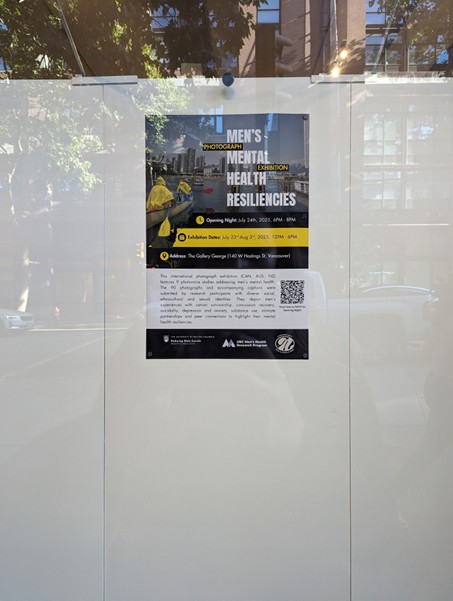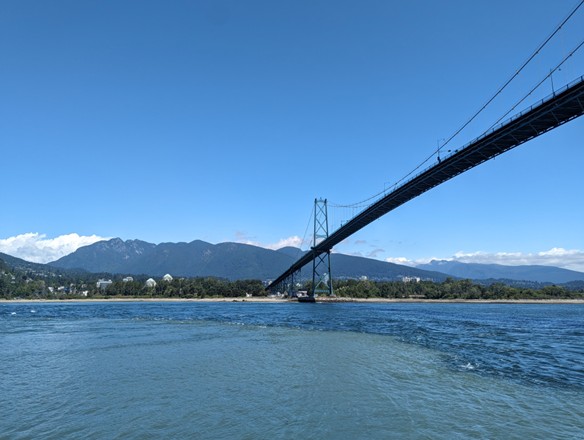Work Package 1 of Discovering Liveability is centred on building a ‘Lived & Living Experience Hub’ for suicide research (more information here and here). As part of that work, we are visiting research groups and practitioners around the world who are already engaged in the messy, important work of centring lived and living experience perspectives. Through conversations with already-established research groups and services, we hope to build a picture of the possibilities, challenges, and potential gaps in current practices. This is part of our effort to learn about exciting and emancipatory practices which can inform the development of our own approaches. For the first of these visits, I travelled to Canada – specifically Vancouver, Victoria, and Toronto. In this blog, I reflect on some of the conversations and events from this trip and describe some of the ways we’ll be using the learning from these visits to think with as a team.

Highlights from the Canada site visit
Meeting with the Men’s Health Research Programme, led by (DL Advisory Board Member) Professor John Oliffe at the University of British Columbia, was the key reason for the Canada visit. The team at UBC very kindly invited me to participate in their Researching Male Suicide Research Excellence Cluster Meeting – expanding the conversation to include global initiatives in men’s suicide research and programming. Over the course of the week, we heard presentations across a variety of dimensions relating to men’s suicide, including a number of ways projects and programmes enrolled lived and living experience participation and leadership. These projects ranged from photovoice exhibitions to exploring the radicalisation of content on TikTok, demonstrating the breadth of thinking about the possibilities for research in this area. The presentations and events also tackled intersectional issues such as racism and white racial capital, culture, queer identities, poverty, alcohol use, single parenthood, temporalities of peer support, and creating communities.

In addition to a challenging and thought-provoking week of presentations at UBC, my travels over Canada enabled me to interact with a range of practitioners who are ‘doing the work’ of suicide prevention, crisis intervention, and community-building. This included work being undertaken by the Canadian Association of Mental Health, British Columbia, in embedding lived experience leadership into the development of suicide prevention policy, as well as a key focus on suicide prevention practice for farmers, and for workplaces more broadly. Additionally, I spoke to folks involved in leading the Crisis Response Community Led (CRCL) programme, which seeks to change responses to mental health crises through providing an alternative to police as first responders, elevating knowledge of alternative practices and spaces of care, and valuing the agency of people even when they are experiencing moments of crisis.
In Toronto, I learned about the evolution of the Traumatic Loss Survivor Programme at the Distress Centres of Greater Toronto, demonstrating the ways a programme can shift, change, grow, and evolve based on the wants and needs of its lived experience participants. This conversation was one of several that highlighted that the term ‘life promotion’ in Canada is specifically tied to Indigenous and First Nations practices for youth suicide prevention, seeking to “lead with the language of life” (Canadian Association for Suicide Prevention 2025; see also Wise Practices). Also in Toronto, I had a warm, engaging, and extended conversation with Nitika Chunilall, Director of Prevention and Promotion Initiatives at the Mental Health Commission of Canada, which particularly emphasised their Roots of Hope community suicide prevention model, focused on enabling the local creation of suicide prevention practices through community expertise. These conversations were not only valuable for their practical discussion of doing lived and living experience-led work but also connect this lived and living experience approach to the core work of community-based and peer-led practices of support, which Work Package 2 of Discovering Liveability will be exploring throughout the project.
This is just a snapshot of the range of individuals and groups who shared their experiences with me during my visit. We would like to send a very sincere thank you to everyone who spoke to me during this trip, sharing experiences, practices, and challenges from which our whole team will get the privilege of learning.

What we are doing with this learning
I’ve returned to the UK with a wealth of information, ideas, and new contacts to help us to develop the Lived and Living Experience Hub – and now we have to develop avenues to use this learning. We are doing this in several ways, a few of which I’ve highlighted here.
- Continuing contacts – we are having really productive follow-up conversations with a number of individuals and groups from the Canada site visit, to continue to learn and grow together. This is part of one of the core goals of Work Package 1 – to ensure the Hub becomes a space that enables the exchange of ideas and practices of lived and living experience-led work in suicide research and prevention, globally.
- Reflecting on research – as a Discovering Liveability team, we are using the notes from the visit to reflect on the ideas and approaches discussed; one way we did this was through an internal lunchtime seminar, using a gamified creative brainstorming approach. This has been particularly useful in collectively thinking and developing the questions that this reflection process has raised for us as a project team.
- Case studies – prior to the site visits, we developed forms to help us compare the notes from the different visits, and to help us create a ‘wish list’ of the WP1 team’s questions for the folks we are meeting with. These questions specifically centre around the practicalities of ‘doing’ lived and living experience work, defining lived and living experience, challenges and barriers, ethics, and hopes for the future. Some of these will be developed into ‘tiny case studies’ to direct our future inquiries.
- Disseminating learning – we plan to develop ways of sharing what we’ve learned through our Hub activities in the lead up to the official launch. Watch this space for further details!
Next steps
This was the first of four planned visits, and we learned a lot about the potential and practicalities of this approach to learning from other groups through this first visit. Other colleagues from the team will be travelling across the UK, and to Australia and India to conduct similar visits and bridge the work of lived and living experience research and practice around suicide globally. Recaps and updates from those visits, as well as how we start drawing together this mini-world tour of lived and living experience research are still to come!

